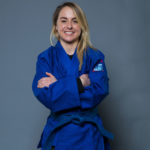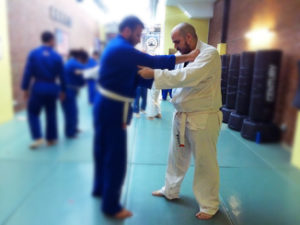“We do the best we can with what we know, and when we know better, we do better.“
Maya Angelou
What does it mean to “do our best”? It’s a very personal question. After all, everyone’s best is different. In the martial arts classroom, we may all intend to develop ourselves in a positive manner, as the first line of our “Student Creed” goes. In order to have positive outcomes, we need to set positive intentions for ourselves. But to get the measure of “our best”, we have to have the habit of setting those intentions over and over. The creed acts as a guideline, and our teachers as our guides to constantly remind us that we are never the same person today as we were yesterday, and our work is never done.
It starts when we wake up. We begin the day at a crossroads, one way pointing into the direction of positivity and movement, the other towards negativity and stagnation. The clearer our intentions are for the day – what do we want to achieve, who do we want to be – the clearer our path. We can start with a good and healthy breakfast, exercising or some reading to set a positive mindset. This approach lets us experience the day, rather than feeling like we have to tackle it to get it out of the way. Our interactions with friends, family, coworkers and even strangers are filled with more understanding, kindness and love. When we’re in this proactive state of mind, challenges don’t appear as endpoints, but as problems with a solution to be found.
This sort of experience is created through mindset, but our body and spirit have to be in balance as well. These help us endure strenuous challenges and access our potential, whatever is happening for us in the current moment. We have to make the right choices with our lifestyle, nutrition and exercise habits, but that’s not all. We also need to be aware of those things that take a toll on our mental well-being. Surrounding ourselves with positive, like-minded people who also intend to develop themselves in the best way possible is a good place to start. Now that doesn’t mean that their life looks just like ours, or that their path is anything like our own. When we have the right mindset, though, this is a liberating thing: we often go through our lives thinking that our way is the only way, but as we look around we’re reminded that though the goal is the same, the journey for each of us rarely is. Moments that completely throw us off, make us doubt everything that we’ve accomplished so far, appear to another person as just a minor inconvenience.
That our experiences are different without being in conflict lets us recognize those differences as strengths. We can be each other’s biggest supporters. Someone else’s idea, one which never occurred to us, may be a valuable stepping stone, or a trail marker for a way back onto our path. Yes, our efforts are different and our “bests” are not the same. But those variations are a reassurance that we are not alone, that with the right intention we’re connected in the effort to become the best versions of ourselves that we can be.
 Sonja Hofstetter
Sonja Hofstetter
Instructor, Curatorial Research Manager and Archive Administrator
Brooklyn Brazilian Jiu-Jitsu







 The good news for us is martial arts are designed for that slow process of incremental growth. We crawl in the beginning, and then when we can stand on our two feet confidently, we’re invited to reach a little beyond where we are. Maybe not to run, but certainly a brisk walk or a trot. It may mean working with more experienced partners, or it may mean more progressive techniques. It could be moving to a more advanced program of training.
The good news for us is martial arts are designed for that slow process of incremental growth. We crawl in the beginning, and then when we can stand on our two feet confidently, we’re invited to reach a little beyond where we are. Maybe not to run, but certainly a brisk walk or a trot. It may mean working with more experienced partners, or it may mean more progressive techniques. It could be moving to a more advanced program of training.

 On the other hand…
On the other hand…